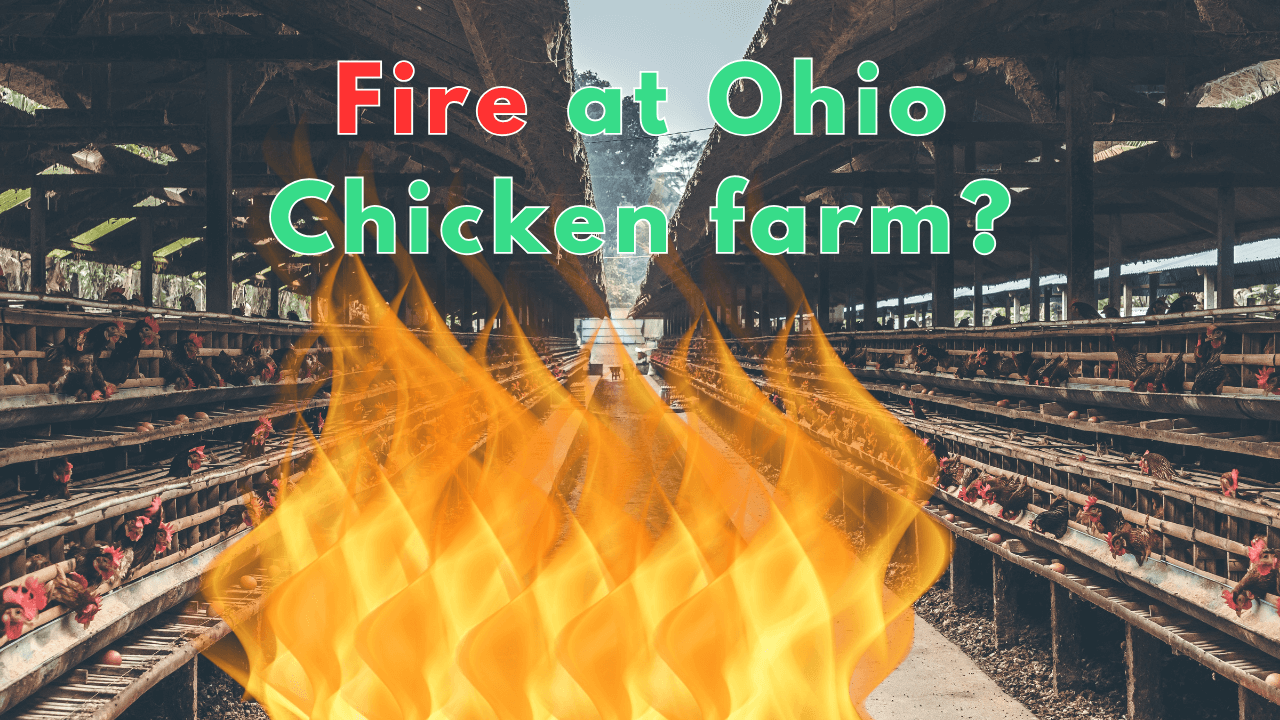Did you know that Ohio produces 10 billion eggs each year, making it one of the top egg-farming states in America? But a recent tragedy has shaken this vital industry.
On February 7, 2025, a massive fire tore through a farm in western Ohio, destroying a building that housed thousands of chicks raised to lay eggs.
Firefighters battled freezing temperatures and thick smoke, but the barn, licensed to hold up to 280,000 young hens, was declared a “total loss”.
So, how many chicks were lost? While officials haven’t confirmed the exact number, this disaster adds to a growing crisis. Ohio’s poultry farms were already struggling with avian influenza, which has killed 21.1 million birds nationwide this year alone. Now, families and farmers are left asking: What does this mean for egg supplies, prices, and the future of farming?
In this article, we’ll break down this.
The Fire Incident: What Happened?
A terrible fire broke out at a farm in Ohio. The disaster caused huge losses and affected many lives. This article explains what happened, how the fire started, the scale of the disaster, the emergency response, and its impact on the farm.
How the Fire Started:
- The fire began very early in the morning.
- It broke out in two buildings on the farm.
- Heavy smoke made it hard for the firefighters to see.
- There were no nearby fire hydrants, so firefighters had to call in extra help.
The fire was very big. One building was destroyed.
Around 200,000 or 280,000 chickens were lost in the fire. (These are the “chicks lost in the fire” that many reports mention.)
The loss of so many birds led to an egg-laying farm disaster, affecting the farm’s ability to produce eggs and support its operations.
Firefighters and emergency teams worked very hard to control the fire. Over 32 agencies from six counties were called to help.
Because of the thick smoke and the lack of hydrants nearby, the emergency teams had to use special equipment and extra support.
This incident not only hurt the farm’s ability to produce eggs but also affected the local food supply. (Many people now worry about how such events might lead to egg shortages.)
How Many Chicks Were Lost?
The fire at the Ohio farm resulted in the estimated loss of 200,000 chicks (some recent post says that 280,000 chicks are lost), a significant blow to the future egg supply.
This event highlights the importance of strong fire safety measures and quick emergency responses on farms.
As these chicks are the next generation of egg layers, their loss can disrupt egg production and affect prices and supply for many consumers.
Impact on the Poultry Industry and Local Community
The loss of so many chickens has many effects on the poultry industry:
- With 200,000 chickens lost, there are fewer birds to grow and sell.
- Fewer chickens means fewer eggs. Local grocery stores may face a shortage, and this can cause the price of eggs to go up.
- Farms that supply meat and eggs, as well as processing plants and stores, feel the ripple effects.
- The fire shows that better safety measures (like fire sprinklers) may be needed to protect farms in the future.
The fire does not only hurt the poultry industry, it also affects local people and the community:
- Many farm workers and local employees may lose work because the farm has been damaged.
- Local businesses, such as restaurants and stores, might suffer because they cannot get enough eggs and chicken products.
- With a shortage of poultry and eggs, prices may rise for everyone.
- Seeing a large farm in trouble can make the whole community feel upset and worried about the future.
Conclusion
The fire at the Ohio farm has left a deep mark on the poultry industry and the local community.
The fire resulted in the loss of thousands of chickens. Prices for eggs and chicken products may rise. The supply chain is stressed, affecting farms, processing plants, and stores.
Many local jobs have been lost, which hurts families and local businesses. The local economy faces challenges as people deal with higher costs and fewer farm products. The community feels the loss and is now looking at ways to prevent such disasters in the future.
So What Can We Do?
By working together, supporting local farms, and making smart changes to fire safety, we can help create a safer and stronger community.
FAQs
How many chicks were lost in the Ohio farm fire?
About 200,000 or 280,000 young chickens were lost in the fire at the Ohio farm.
What caused the fire at the Ohio egg-laying farm?
The exact cause of the fire is still under investigation, and officials have not confirmed a specific trigger. Some early reports point to possible electrical malfunctions or issues with heating devices. No evidence of foul play or arson has been reported so far.
How will the fire affect egg prices in the region?
Experts say the fire is unlikely to have a major effect on egg prices. Since Ohio is one of the largest egg-producing states, the loss from one farm is small compared to total production. Local prices should remain stable, with only minimal disruption expected.
What can be done to prevent farm fires in the future?
Farm fires can be prevented by conducting regular inspections, updating electrical systems, and installing fire alarms and sprinkler systems. Training workers in fire safety and having a clear emergency action plan are key steps. Stricter codes and routine maintenance also play a big role in reducing fire risks.
How many chicks raised to lay eggs were lost in the fire at a large farm in Ohio?
Reports indicate that nearly 200,000 and some say 280,000 chicks. This number highlights the scale of the disaster at that single facility. It is a significant loss but still a small part of the overall egg production in the U.S.
What happened in the fire at the large farm in Ohio where chicks raised to lay eggs were lost?
A large fire broke out in one of the egg farm’s houses, destroying the building and killing about 200,000 to 280,000 young egg-laying birds. The incident unfolded quickly, and firefighters managed to prevent injuries to staff. The event is now under investigation as experts work to understand its cause.

Hello! I’m Ibrahim, the owner and writer of this blog. I run a chicken farm with 160 chickens, and I’ve gained a lot of knowledge about raising and caring for them. Now, I want to share my insights and experiences with you to help you in chicken keeping.

